Wisdom of China's Rural Climate Governance: From Pit Yards to Photovoltaic Roofs
On December 21, the 2023 Impact International Climate Innovation Conference opened in Haikou. With the theme of "Low-Carbon Innovation Leads a Green Future", the conference invited more than 400 representatives from governments, international organizations, well-known universities, research institutions, enterprises, investment institutions, social organizations and media to gather together to discuss the global development trend of low-carbon innovation.
It was held on the 22ndThe international dissemination of China's climate governance wisdomAt the sub-forum, Wang Sheng, Secretary of the Party Leadership Group and President of the South China Sea Research Institute, Cao Haidong, Editorial Board Member of Southern Weekly, Zhang Yan, Director of the Scientific Research Department of Qiongtai Normal University, Hou Liqiang, Chief Reporter of China Daily, Zeng Yue, Founder of Orange Knowledge Youde Education, and Ms. Li Shiyang, Founder of Arrail Behavior Center, shared their practices and thoughts on guiding the public to participate in climate action from multiple perspectives.
空气侠创办人赵亮受邀出席大会,并在“The international dissemination of China's climate governance wisdom“分论坛上,以《中国乡村气候治理智慧:从地坑院到光伏顶》为题进行主题分享。“2022年,空气侠在北京市企业家环保基金会等支持下开展了汾渭平原地区农村民用散煤治理观察调研,开始全面关注乡村能源转型问题。基于这一行动,2023年在“碳中和”公益传播同行者资助计划(CN计划)支持下,我们以“传统村落能源转型与气候传播”为切入,挖掘和传播乡村气候应对的典型案例的好故事。”
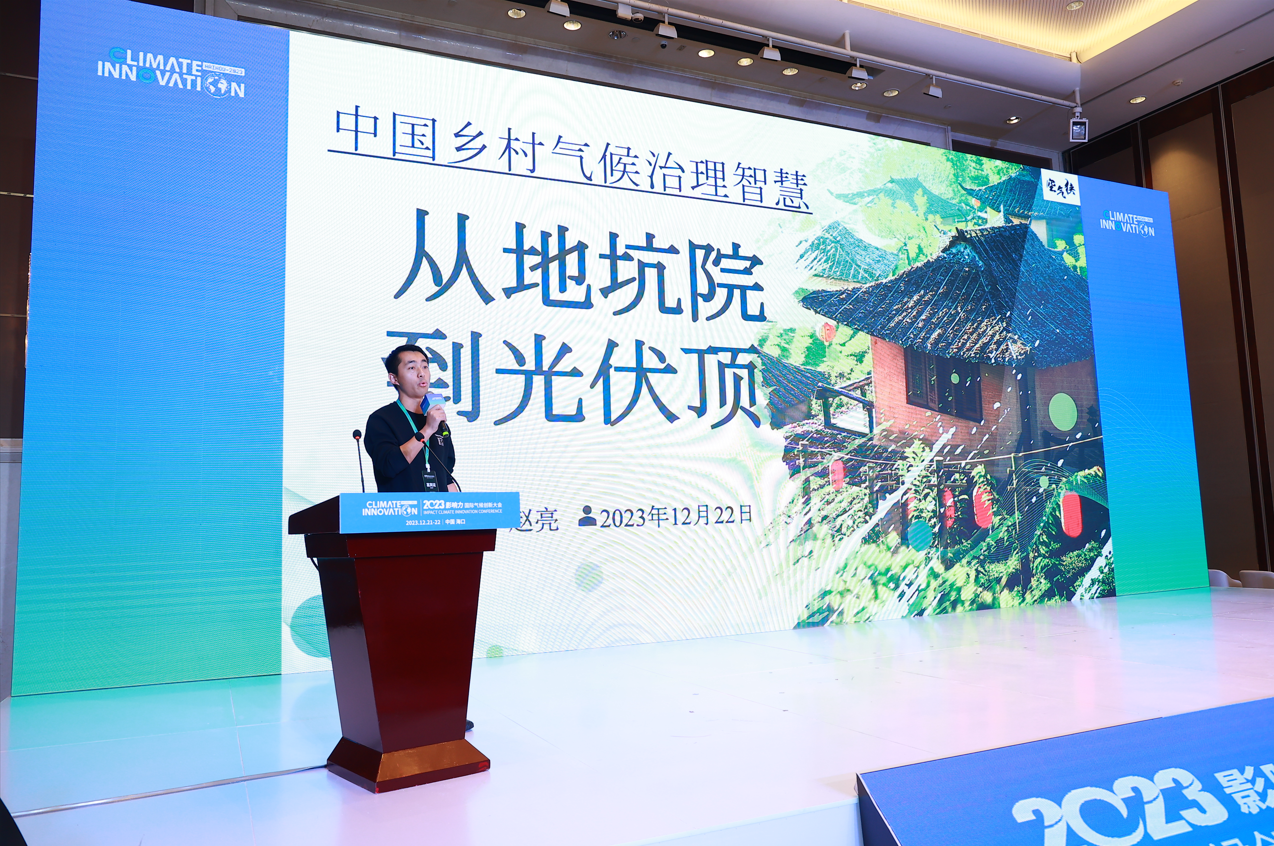
The founder of Air Man shared the theme
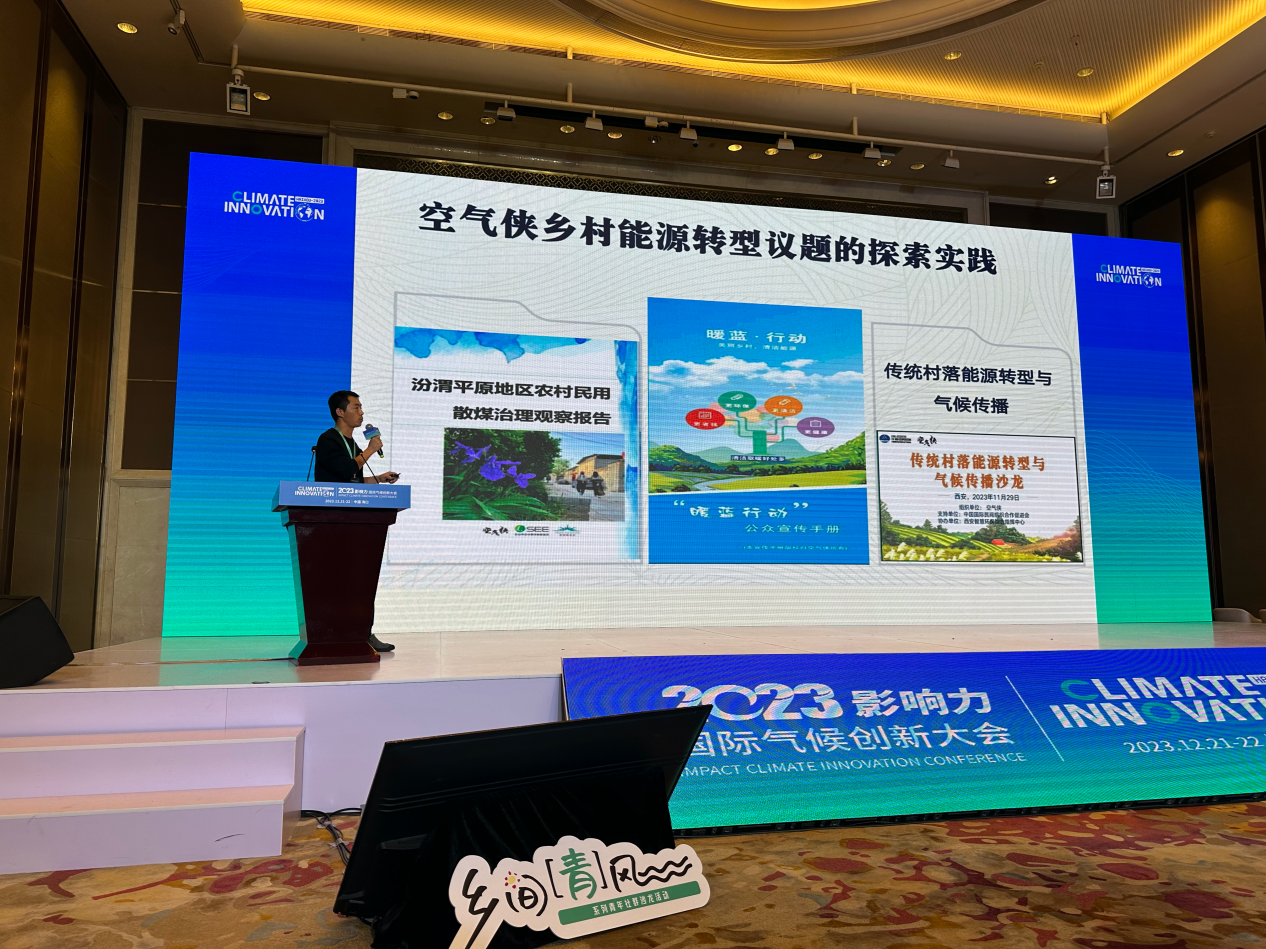
Ancient villages below the horizon:
"I can't see the village when I see the trees, I can't see the houses when I enter the village, and I can't see people when I hear the sounds. This describes the village of Baishe Village, a pit courtyard located in Sanyuan County, Shaanxi Province, ---. This village has a history of more than 1,600 years and belongs to the traditional Chinese village. In Baishe Village, there are relatively intact caves and residential houses; There are 134 well-preserved kilns and 25 kilns that are often inhabited. We visited here again and met Uncle Zuo, an Internet celebrity born in the 80s.
Sanyuan County, where Baishe Village is located, has a semi-arid climate with low rainfall, which is conducive to keeping the local soil dry and solid, so that the cave buildings are durable. The temperature difference between the four seasons of the year is large, which can better reflect the advantages of the cave "cave dwelling" in warm winter and cool in summer. At the same time, this structure is relatively economical in building materials, low in construction costs, energy-saving and electricity-saving, and reduces the impact on the environment. In addition to satisfying the residential function, the underground caves in Baishe Village have also developed some farmhouses, red education, etc.
In the context of "global boiling", in western China, the traditional village of Baishe Village in Sanyuan County may offer another possibility for adaptation to climate change. Based on its own geographical and environmental conditions, the pit courtyard cave in Baishe Village is low-carbon, environmentally friendly, and contains China's thousand-year-old wisdom, which is also the practical behavior of the Chinese people to practice the sustainable development of architecture. Many of the stories behind this need to be discovered, documented, and disseminated.
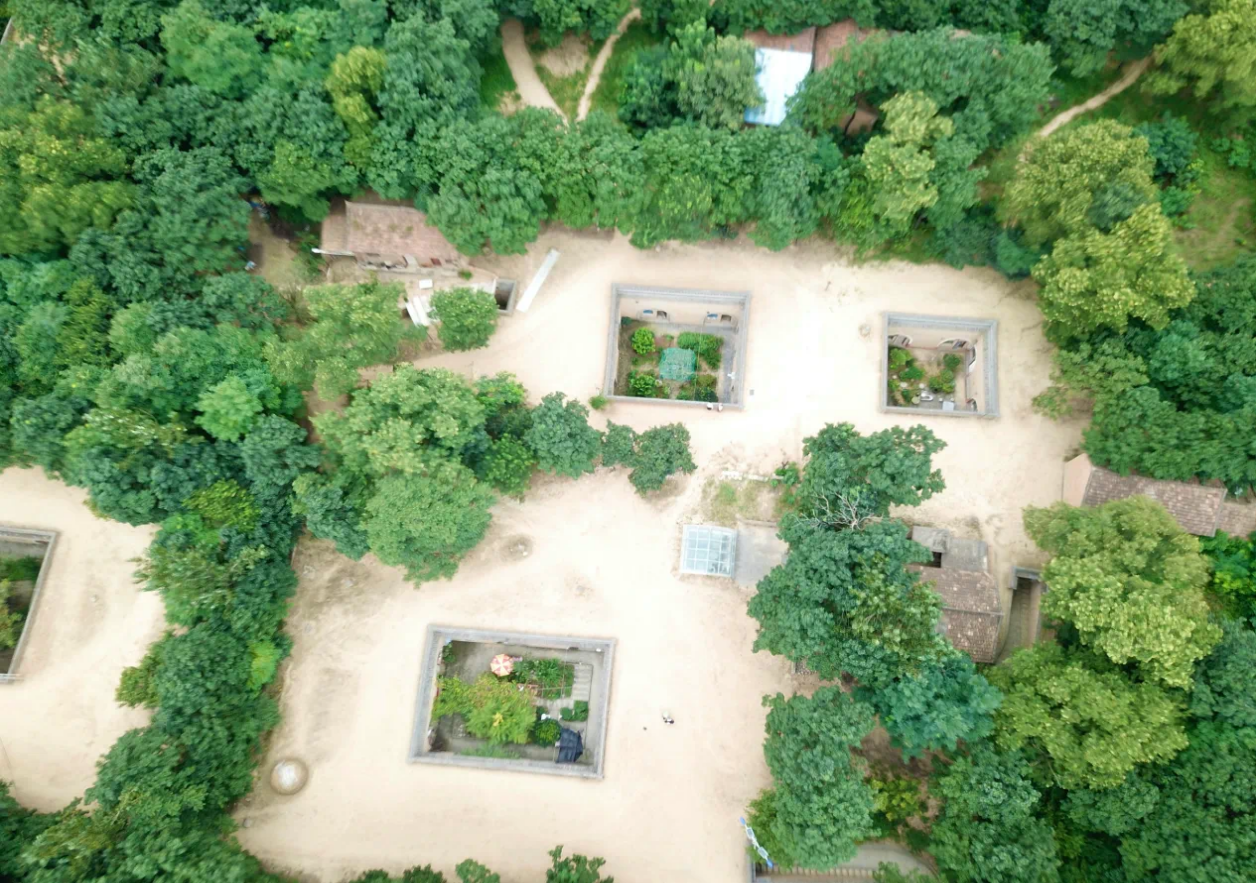
A village below the horizon: Kashiwa Village Photo/Air Man
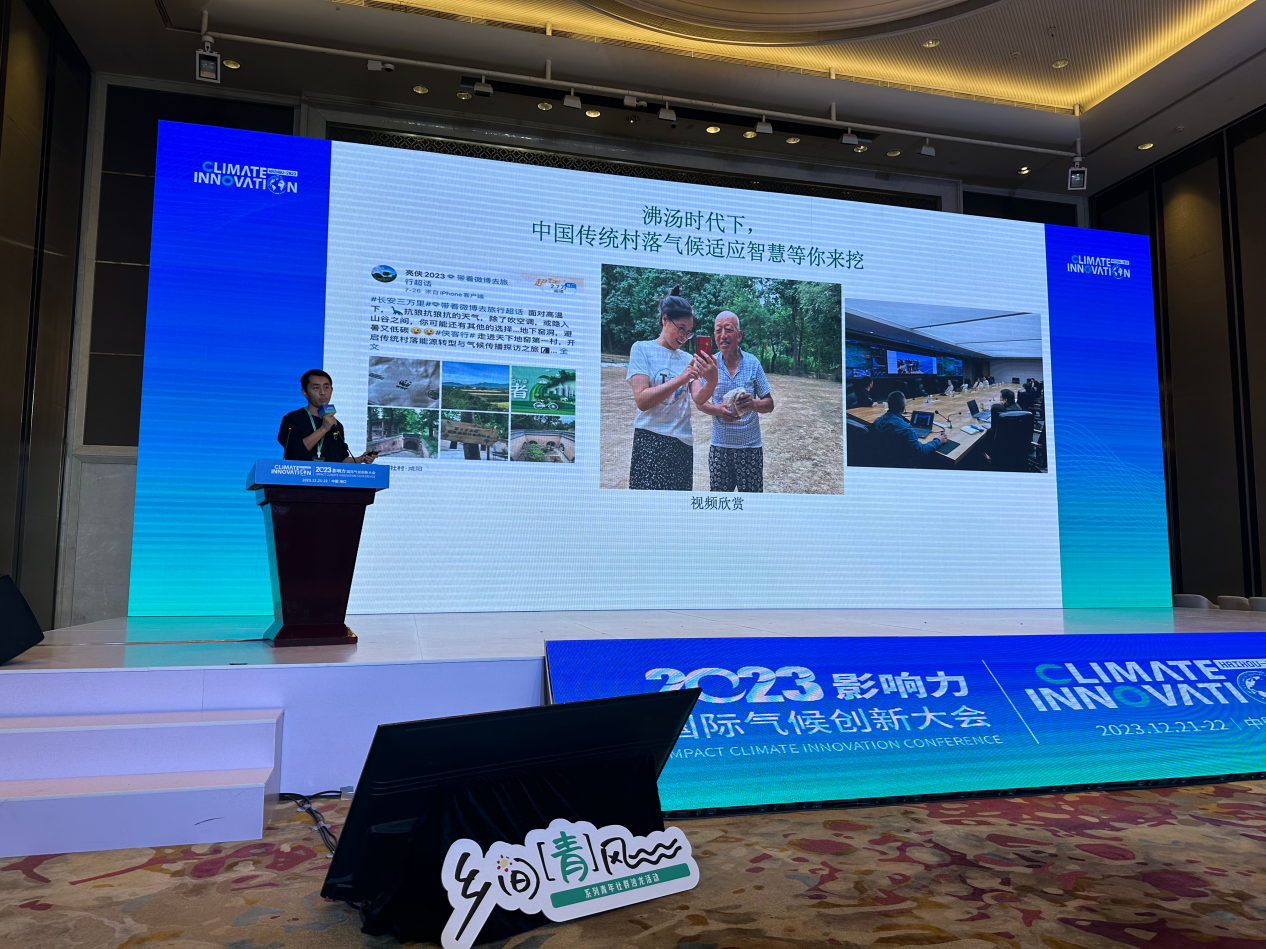
A zero-carbon village born to the sun:
With the promotion of a series of policies such as clean heating in the northern region and rural energy revolution, one after another light villages have begun to emerge. For example, the zero-carbon village on the bank of the Yellow River, Zhuangshang Village in Ruicheng, Shanxi, the photovoltaic rural revitalization project in Kefang Village, Tongchuan City, and the Donggaoyuan Photovoltaic Village in Dali County have all attracted attention recently.

Among them, Zhuangshang Village in Ruicheng was reported by many media. We decided to find out a while ago? Is it that legendary?
After on-site understanding, we found that Zhuangshang Village has taken advantage of its special geographical location and lighting conditions, in addition to rooftop photovoltaics, abandoned caves and barren slopes have also become "photovoltaic courtyards" and "photovoltaic corridors". The two pictures in 2020 and 2023 are contrasting, and the changes brought by the construction of zero-carbon villages to Zhuangshang Village are real.
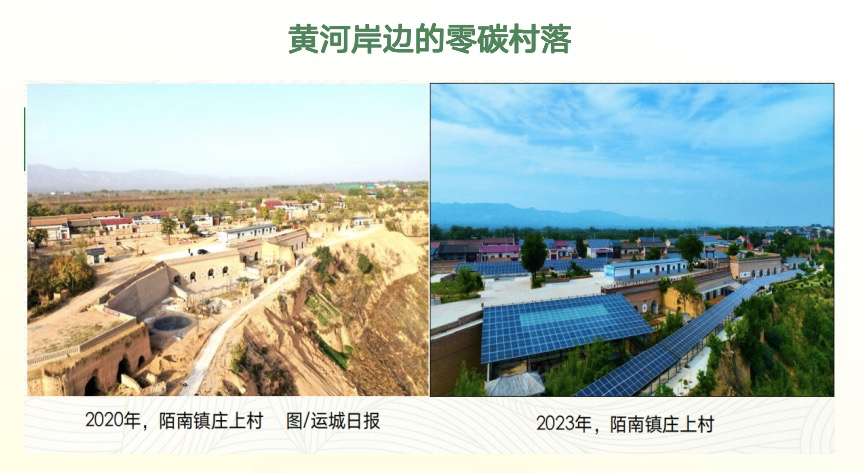
The construction of "zero-carbon" villages and towns adopts the "light, storage, direct and flexible" system as the application mode. "Light" refers to distributed solar photovoltaic power generation; "Storage" refers to distributed energy storage, that is, the storage of part of the photovoltaic electric energy through lithium iron phosphate batteries; "Straight" refers to a low-voltage DC distribution system; "Flexible" refers to flexible access to improve security and stability. The project is expected to save 800 tons of standard coal, 7,700 tons of water, 2,450 tons of carbon dioxide emissions, 4.46 tons of soot emissions, straw, loose coal pollution and other environmental pollution problems are fundamentally eliminated. And most importantly, it is the increase in the income of residents. The average annual income of 71 rooftop tenants increased by more than 1,200 yuan.
On April 24, 2023, Zhuangshang Village was jointly awarded the "China Zero-carbon Village Demonstration Village" by the United Nations Development Programme, the Global Environment Facility, and the Ministry of Agriculture and Rural Affairs. In December, at the COP28 conference, it won the "Energy Transition Changemaker" award at the 28th United Nations Climate Change Conference, becoming one of the 28 selected projects in the world and one of the five selected projects in China.
"We can see that in the smart practice of coping with climate change in China's rural areas, there are not only cases of climate adaptation in traditional villages, but also cases of renewable energy technology applications such as photovoltaics. These cases need to be jointly disseminated by diverse groups such as the government, enterprises, scientific research institutions, media, social organizations and villagers." During the sharing, Zhao Liang shared his observations and thoughts on the case study of energy transition in traditional villages: we need to respect the initiative and wisdom of local residents, take village residents as the main body of communication, and combine original ecological narrative + science communication. Appreciate her power! In the process of promoting climate governance, traditional adaptation wisdom and renewable energy can be integrated.
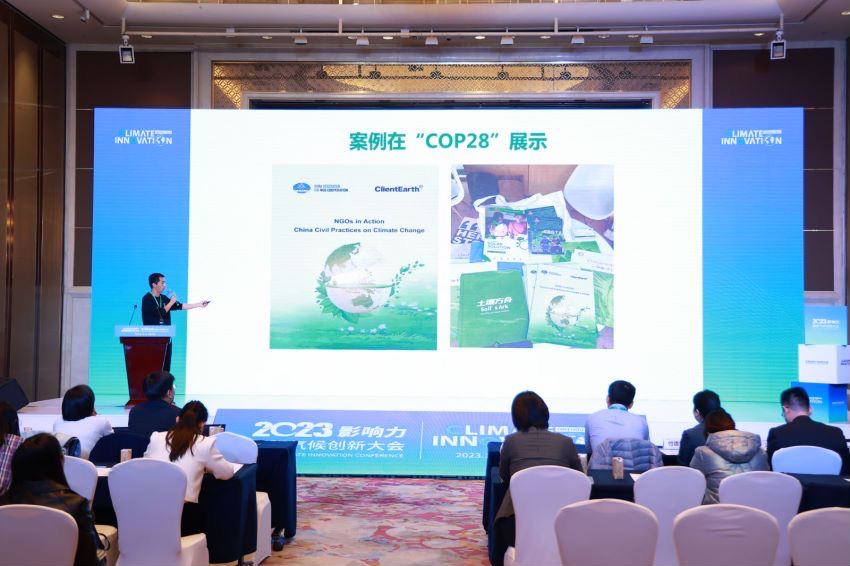
Climate action cases unveiled at COP28
This conference is the first international conference focusing on climate issues held by Hainan Province after the conclusion of the 28th United Nations Climate Change Conference (COP28) in Dubai. Topics covered include energy, circular economy, infrastructure, ESG, impact investment, agricultural decarbonization, climate finance and carbon markets, green refrigeration, forestry carbon sinks, blue carbon,The international dissemination of China's climate governance wisdomand so on.
The conference invites experts in the field of climate change, representatives of international organizations such as the United Nations, business executives, academics and associations to discuss the key issues of global response to climate change, carbon neutrality solutions in the context of environmental governance and low-carbon transformation of industries, share innovative and cutting-edge solutions for clean energy, decarbonization and climate change technologies from all over the world, promote the actions of all parties to achieve climate goals, and provide policy recommendations and multi-technology solutions for Hainan to cope with climate change and practice low-carbon green development.







